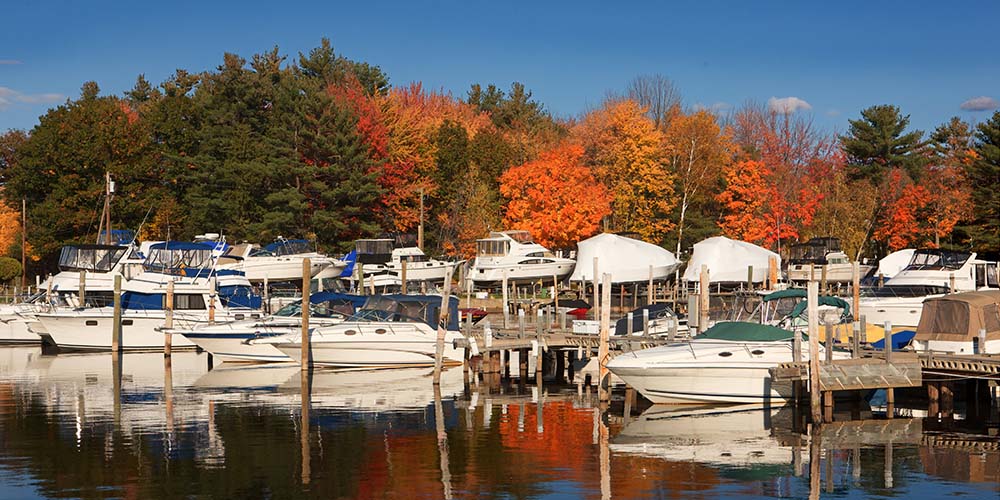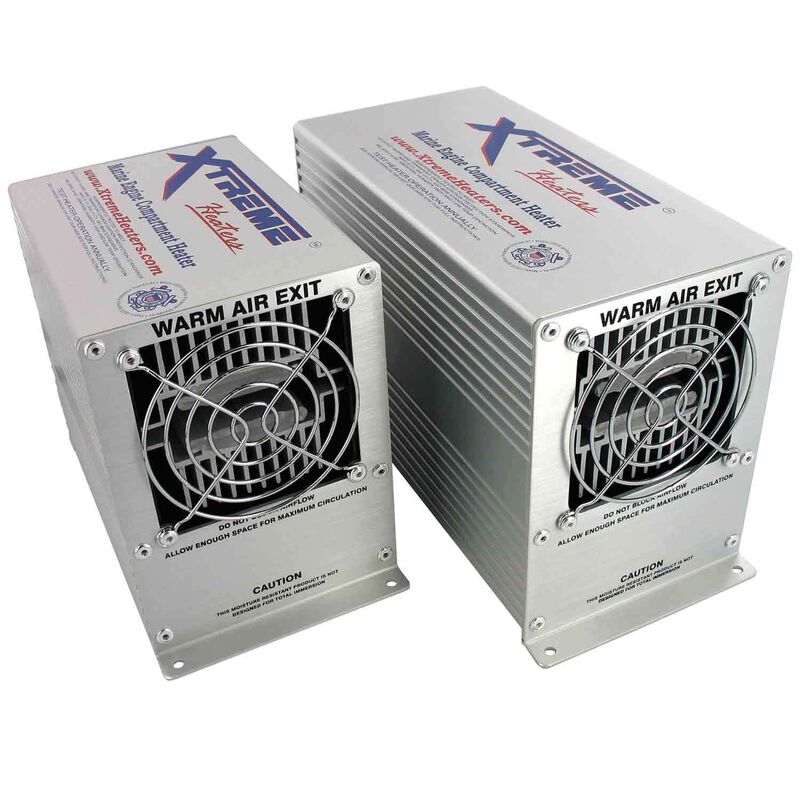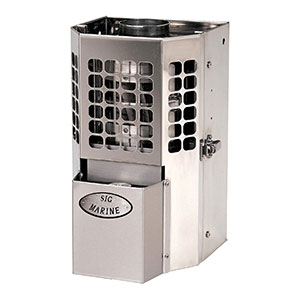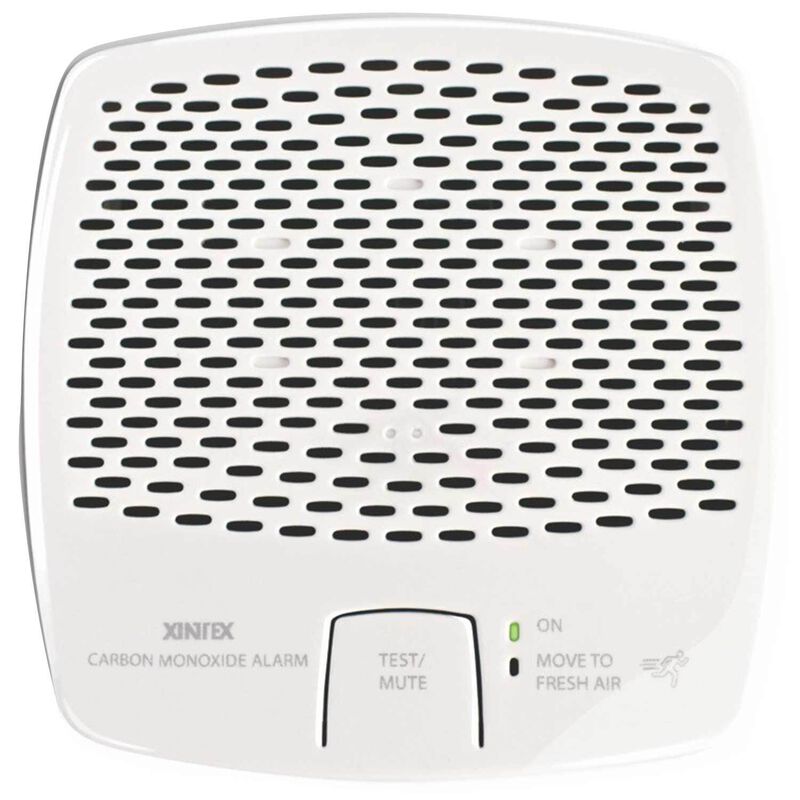
Avoiding Winterizing or Freeze Damage
Guess which state had the highest number of freeze-related insurance claims. Michigan? Minnesota? Try California. According to the marine insurers at BoatUS, folks in the deep-freeze states take their bitter winters seriously, but in more temperate states like Florida, Texas, Louisiana, Alabama, Georgia and California, mild climates lull boaters into ignoring the forecasts for the occasional freezing weather.
Cold snaps can do a lot of damage to your boat, but in another week the temperature may climb back into the 60's-perfect for boating. Marine heaters in your engine compartment and cabin are great ways to protect your boat against freeze damage and still go boating when the weather warms up. This article will walk you through common options for heating a boat in winter to protect against a cracked engine block or other damage without fully winterizing your boat.
- Heating the Engine Compartment
- Heating the Cabin
- Amperage Limits
- Carbon Monoxide
- Reverse Cycle Air Conditioning Systems
Heating the Engine Compartment

Xtreme makes engine/bilge heaters in a variety of sizes to fit your needs.
Engine compartment heaters, like those from Xtreme, are a safe and effective alternative to winterizing your engine (or engines). They cycle on and off in temperatures between about 40°F and 55°F and are safer than home space heaters or a constantly burning 60W light bulb. Those "quick and dirty" alternatives have caused many fires and sunken boats.
Engine heaters work best when you place covers over your boat's bilge blower vents. The best method we have found is to have a canvas shop or an upholstery shop make a set of simple, inexpensive "snap-on" covers to fit over the vents. When you are ready to use the boat, simply remove the vent covers. When you leave the boat, snap the covers back on. This will keep the cold, damp winter wind out of the engine compartment, and keep the heat in.
Remember that a boat stored out of the water loses heat much faster than a boat in the slip. If you store your boat suspended on a lift or on its trailer, you should also cover the outdrive unit, in addition to covering your bilge blower vents. A similar snap-on cover or a heavy-mil plastic garbage bag slipped up over the outdrive and tied at the top will prevent the engine compartment heat from dissipating through the exposed metal.
When a freeze is forecast, you can also put your boat back in the water, since water provides greater insulation than air. Boats stored in the water can use de-icers (see our Maintenance section) to circulate the water below your slip to prevent your boat from freezing in.
Heating the Cabin

The Sigmar 100 Bulkhead Mounted Heater is a good choice for a diesel-powered boat of about 30'.
A good cabin heater makes life onboard much more pleasant in the early or late season. Boaters in temperate climates may require only minimal heating. During summer boating we use our West Marine Portable Cabin Heater for only a few minutes when we climb out of the V-berth on our Cal 40 sailboat in the morning. That, and a galley stove, are all we need to heat the cabin with outside temperatures in the 50°F range.
Extending your comfort range and your boating season requires a real heater. Boaters often choose a heater that uses the same fuel as their galley stove or engine for safety and convenience.
How much BTU capacity do you need? One simple rule of thumb to maintain a 36° temperature differential (68° inside the boat when the outside is freezing) is to multiply the cubic volume of the interior by 15 (for powerboats) or by 12 (for sailboats) to get BTU capacity. A 30' sailboat with about 800 cu.ft. would need about 9,600 BTU, for example.
Amperage Limits
Heating your boat's cabin with one or more electric space heaters may run up against the limitations of a 30-amp shore power connection. Boaters plug their heater in just like at home, and the typical heater is good for one cabin. Want to heat both the front cabin and the main cabin? Just plug in another space heater, right?
This is a good way to trip your shore power breaker, or to cause an onboard fire. The typical 120-volt AC space heater has two or more settings, with the "High" setting usually 1,500 watts. This heater will draw about 14 amps. Plug in a pair, running on the highest setting, and you're drawing 28 amps. Then when your battery charger automatically cycles on, you'll trip the main breaker for sure.
If you're heating your boat with a space heater, remember the following warnings to prevent fires:- Do not leave your heater running when you're not aboard
- Don't plug more than one space heater into a branch circuit that's rated for 20 amps
- Replace any shore power components that are damaged, show burn marks or melted insulation
- Report damaged dockside receptacles to your harbormaster
Carbon Monoxide

We recommend installing a carbon monoxide detector on your boat, especially if you are using combustion heating.
Discussing combustion heating requires a few words about safety. Carbon monoxide is a colorless, odorless, invisible, and very toxic gas. CO is produced by incomplete combustion of a carbon-based fuel-such as gasoline, wood or kerosene-burned in an atmosphere with insufficient oxygen. Every year, malfunctioning or improperly vented heating appliances cause hundreds of deaths or chronic illness brought on by less than lethal carbon monoxide levels that go undetected. Take precautions against this threat.
Look for propane heaters with oxygen depletion sensors that shut off the fuel supply when room oxygen levels fall below 95% of normal (ABYC 26.5.11). Always keep a hatch open when using unvented heat sources, know the symptoms of CO poisoning (which are sometimes mistaken for those of seasickness), and purchase a carbon monoxide detector, located in our Safety section. Then enjoy the warm comfort of your cozy cabin. For more on carbon monoxide safety see our West Advisor article on Carbon Monoxide Safety.
Reverse Cycle Air Conditioning Systems
Dometic (EnviroComfort) and Webasto (FCF Series) make reverse cycle air conditioners that cool your cabin, and also act as a "heat pump," running backwards to warm the interior of your boat. They let you extend the boating season into the spring and fall, and are a good choice for liveaboards or cruisers who travel between tropical and cool climates, providing one system that can efficiently cool and heat the boat. Though affected by water temperature, they can cool your boat in 90ºF waters and heat your boat in waters as low as 40ºF. More information on how to select a reverse cycle AC system is in the West Advisor on Selecting Air Conditioning for Your Boat.